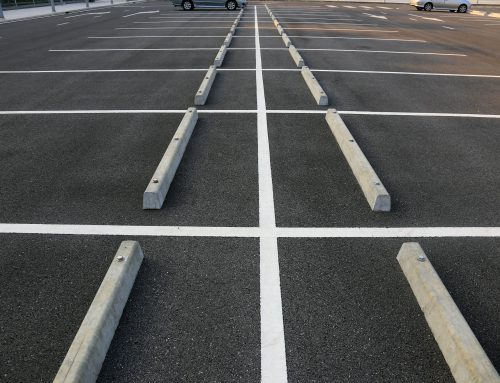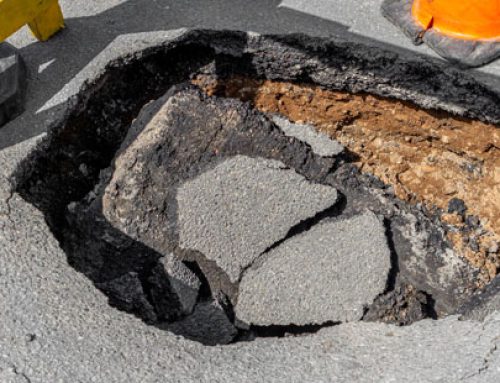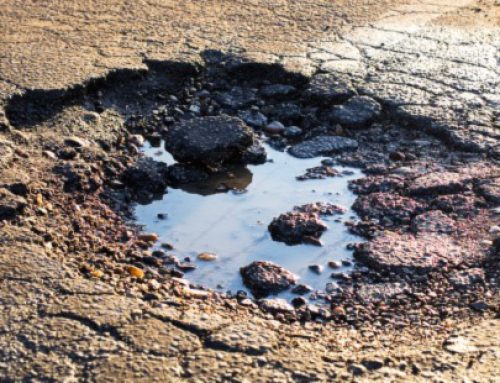Asphalt roads are the most common type of roadway due to their cost-efficiency, strength, and durability, leading to over two million miles of U.S. paved asphalt roads; most people, however, aren’t aware of the asphalt road-making process.
As one of the leading asphalt companies in Central Texas, Premium Asphalt Paving & Sealcoating completes numerous asphalt paving installations, repairs, and repaving services each year. Not only do we understand the asphalt installation from beginning to end, but we also love to educate others on the process.
Before we explain how asphalt roads are made, let’s look at the history of asphalt roads in America.
A Brief History of Asphalt Roads
Asphalt is a sticky black mixture of aggregates, binder, and filler, with the first recorded use of asphalt in road building beginning in 625 B.C. in Babylon. The Romans also incorporated it into their ancient roadways as a smooth surface for their military.
In 1870, a Belgian chemist named Edmund J. DeSmedt was the first person to lay an asphalt road in Newark, New Jersey. He also paved Pennsylvania Avenue in Washington, D.C., using asphalt from Trinidad Lake.
Since then, new technology has helped refine asphalt mixtures to improve the final products; as a result, there are currently hundreds of different ways to manufacture road construction. In 1956, the Interstate Highways Act greatly improved asphalt road construction.
In 1986, Congress created the National Center for Asphalt Technology to test and improve asphalt across the country. Today, asphalt is one of the country’s most recycled materials, with over 70 million metric tons recycled every year.
Read More: How Technology Has Improved Asphalt Paving
Asphalt Road Installation Process
With today’s advanced technologies, asphalt pavement is installed faster and more efficiently than ever before. Here is a step-by-step guide to the asphalt installation process.
1. Demolition and Removal
The first step is to demolish the existing surface. An asphalt pavement company uses heavy machinery like forklifts, front loaders, and dump trucks to remove the old surface.
The removed materials are collected and recycled into new asphalt mixtures. Asphalt is environmentally friendly because these materials are recycled and not thrown away.
2. Grading and Sloping
After demolition, the surface is graded and sloped to ensure proper water drainage. This step keeps water from collecting on the asphalt road and causing damage like cracks, potholes, and heaving.
3. Sub-Base
The sub-base layer is the most important part of the asphalt road because it provides a stable surface to support the new pavement. It also acts as a barrier against weather damage. Without a correctly compacted sub-base, the road’s durability dramatically decreases.
4. Proof Roll and Undercutting
A proof roll tests the sub-base foundation before the remaining pavement layers are installed. This extra step ensures the underlying surface is strong and ready to support the new asphalt. If any areas flex more than an inch under the weight of the smooth-drum roller, a technician uses the undercutting method to repair the soft area.
Undercutting involves digging down into the surface and replacing the soft spot with a stronger aggregate mixture. Instead of digging up the whole sub-base and starting over, this technique creates a solid support base for the new asphalt.
5. Binder Layer
The binder layer is added once the sub-base is correctly installed and fully supported. This layer is a mixture of large aggregate and oil that ensures the overall strength and durability of the asphalt road.
6. Asphalt Installation
This top layer of the asphalt road is made of small aggregates, sand, and oil. Combining these materials creates asphalt’s well-known shiny black finish and provides a smooth ride for vehicles.
7. Butt Joints and Transitions
Since most new roads connect to other surfaces, an asphalt contractor must smooth out each transition connecting the old surface to the new. Butt joints ensure drivers and
pedestrians don’t notice a difference between the old and new surfaces. Transitional areas may require extra grading to ensure water run-off is appropriate.
8. Final Roll
Before installation is complete, a roller truck compacts and smooths the entire surface. Once this final roll removes any small bumps or loose debris poking through the new surface, the asphalt road is ready to go.
Need a Free Estimate on Your Next Asphalt Paving Project?
Whether you need a new road or asphalt maintenance services, you can trust us to do the job right. At Premium Asphalt Paving & Sealcoating, our pavements are built to last. We provide customized commercial and residential asphalt services throughout the Brazos Valley. Contact us today, and let’s get started on your next asphalt project!
Read More: The Premium Asphalt Difference








